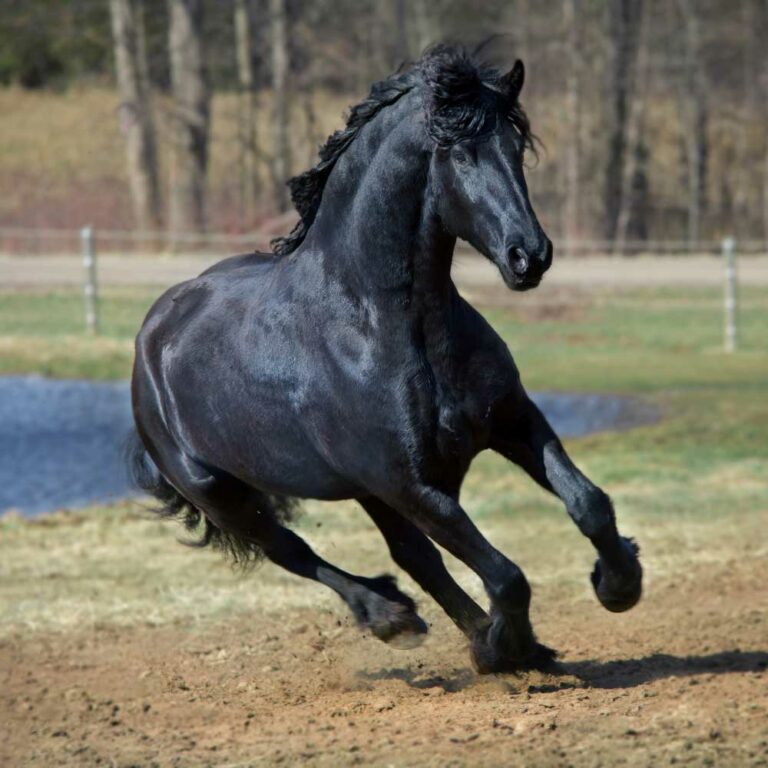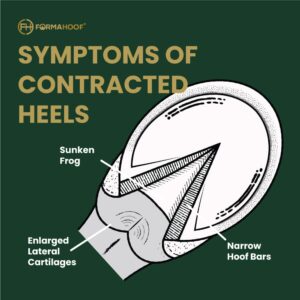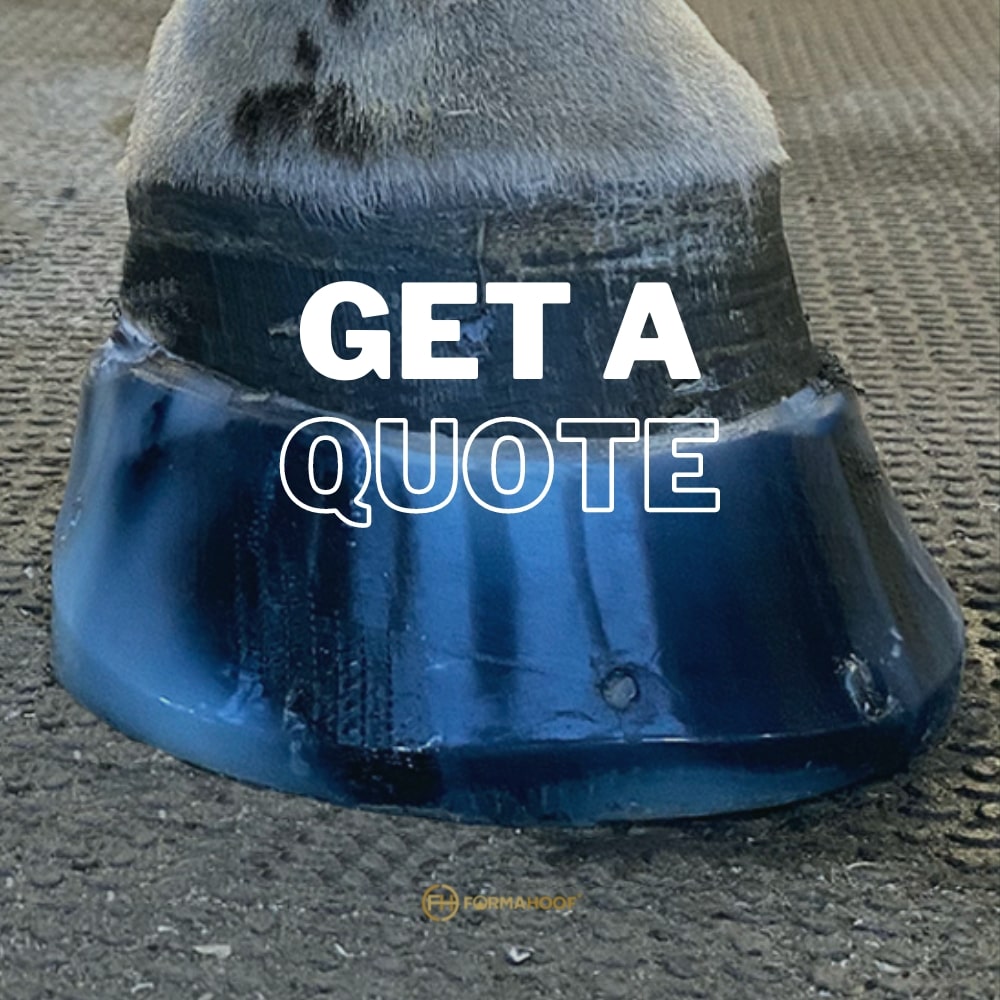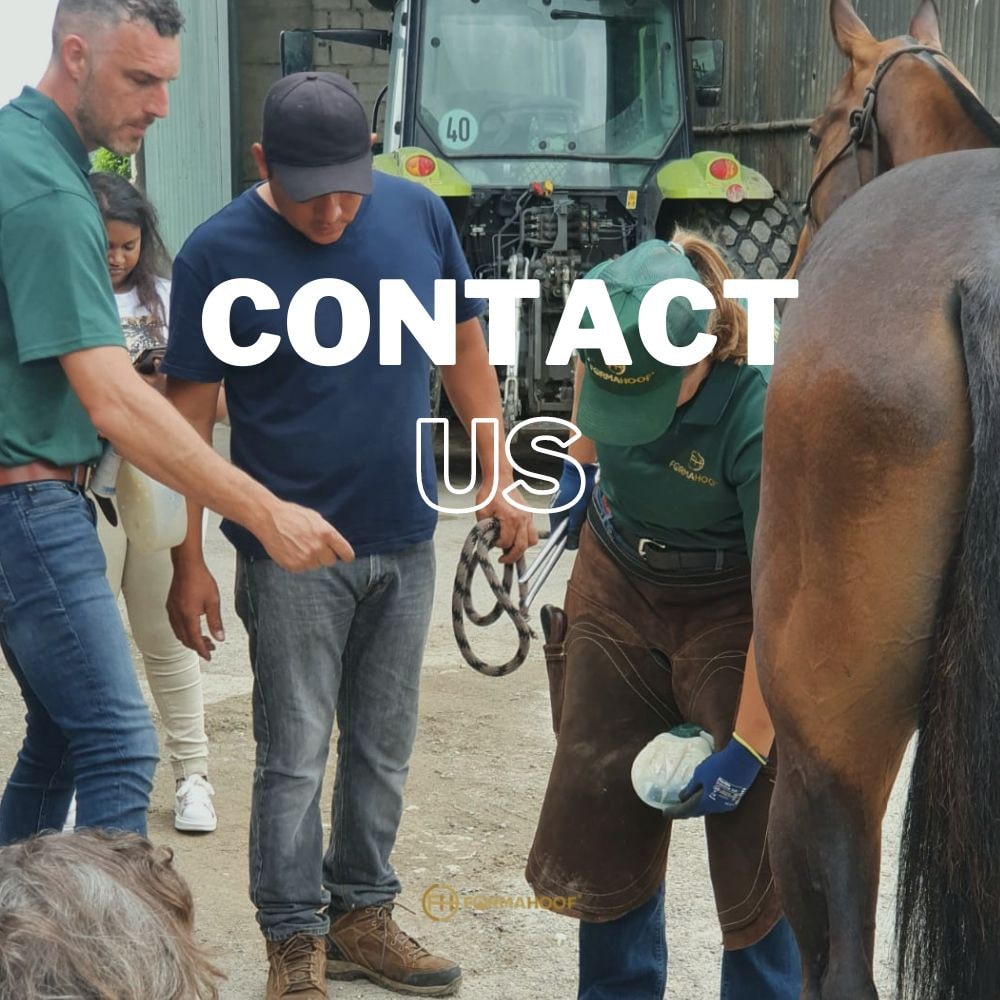Laminitis, a painful and potentially crippling condition affecting the sensitive laminae within a horse’s hoof, doesn’t discriminate based on gender. Whether mare, gelding, or stallion, any horse is susceptible. However, when it comes to stallions, there are unique considerations due to their distinct physiology, behavior, and role in reproduction.
Laminitis Causes in Stallions
Laminitis arises from inflammation of the sensitive laminae within a horse’s hoof. A variety of triggers can precipitate this inflammation, ranging from diet and weight to stress and systemic infections. Laminitis can be instigated by a number of factors:
Endocrine Disorders: Equine Metabolic Syndrome (EMS) and Pituitary Pars Intermedia Dysfunction (PPID) can increase the risk. While these are often associated with older horses, stallions with a history of EMS or a predisposition can be at risk.
Weight and Diet: Overweight horses, including well-fed stallions, have a higher risk. Excessive intake of high-carbohydrate feeds or lush pasture can induce laminitis.
Stress: Stallions, particularly those active in breeding programs, can experience stress. Transporting for breeding, changes in environment, or fights with other stallions can cause physical and psychological stress, potentially contributing to laminitis onset.
Concurrent Illness or Medication: Systemic infections or illnesses, or reactions to certain medications, can trigger laminitis in stallions.
Symptoms of Laminitis in Stallions
The manifestation of laminitis in stallions doesn’t differ significantly from other horses. The clinical signs of laminitis in stallions are:
- Reluctance to move or limping.
- Heat in the hooves and increased digital pulse.
- A noticeable shift in weight to the hindquarters, often called a “sawhorse” stance.
- Pain when pressure is applied to the toe region.
- Rings on the hoof wall that grow downward from the coronary band.
Managing Laminitis in Stallions
Addressing laminitis demands a multifaceted approach.
Immediate Veterinary Attention: A veterinarian should be called immediately if laminitis is suspected. Early intervention can drastically improve outcomes.
Dietary Adjustment: Stallions should be shifted to a low-carbohydrate diet. Avoid grains and lush pastures.
Foot Care: Proper trimming and shoeing can help realign the coffin bone within the hoof and reduce pain. In some cases, FormaHoof should be recommended.
Limit Breeding Activities: If a breeding stallion develops laminitis, it’s advisable to limit or halt breeding activities until recovery. The act of mounting can place additional stress on the already compromised hooves.
Environment: Soft, deep bedding can provide comfort. It might also be beneficial to limit movement in the initial stages but discuss this with your veterinarian, as FormaHoof can alleviate this requirement.
Medication and Supplements: Non-steroidal anti-inflammatory drugs (NSAIDs) can be prescribed to manage pain. Additionally, certain supplements may support hoof health.
Prevention
Prevention is always better than cure. Regular veterinary check-ups, a balanced diet, proper hoof care, and management of stress are key in preventing laminitis in stallions. Also, be aware of the signs and act quickly should symptoms arise.
Supporting Stallions with FormaHoof: Roosters Story
Rooster, a majestic 15-year-old Andalusian stallion, was ushered into the clinic primarily for semen collection and freezing. But beneath the elegant facade of this proud horse lay a condition that had troubled him and deeply concerned his owner. An encounter with FormaHoof Certified Applicator – Dr. Bruce Buenger (DMV), Washington Animal Clinic, led to a brighter future for Rooster.
Rooster’s owner had approached the clinic with measured expectations. The horse’s chronic lameness and persistent foot issues had clouded any optimism. The grim prognosis had even led the owner to contemplate a future without Rooster. Despite the stallion’s primary purpose being semen collection, his compromised physical state was palpable. The very act of walking from the barn to the collection area was an ordeal, every step echoing the pain he was enduring.
Seeing Rooster grapple with his condition for two weeks prompted a proactive stance. With the owner’s consent, a comprehensive evaluation was initiated. Radiographs were taken, providing a clearer picture of the laminitis plaguing Rooster’s hooves.
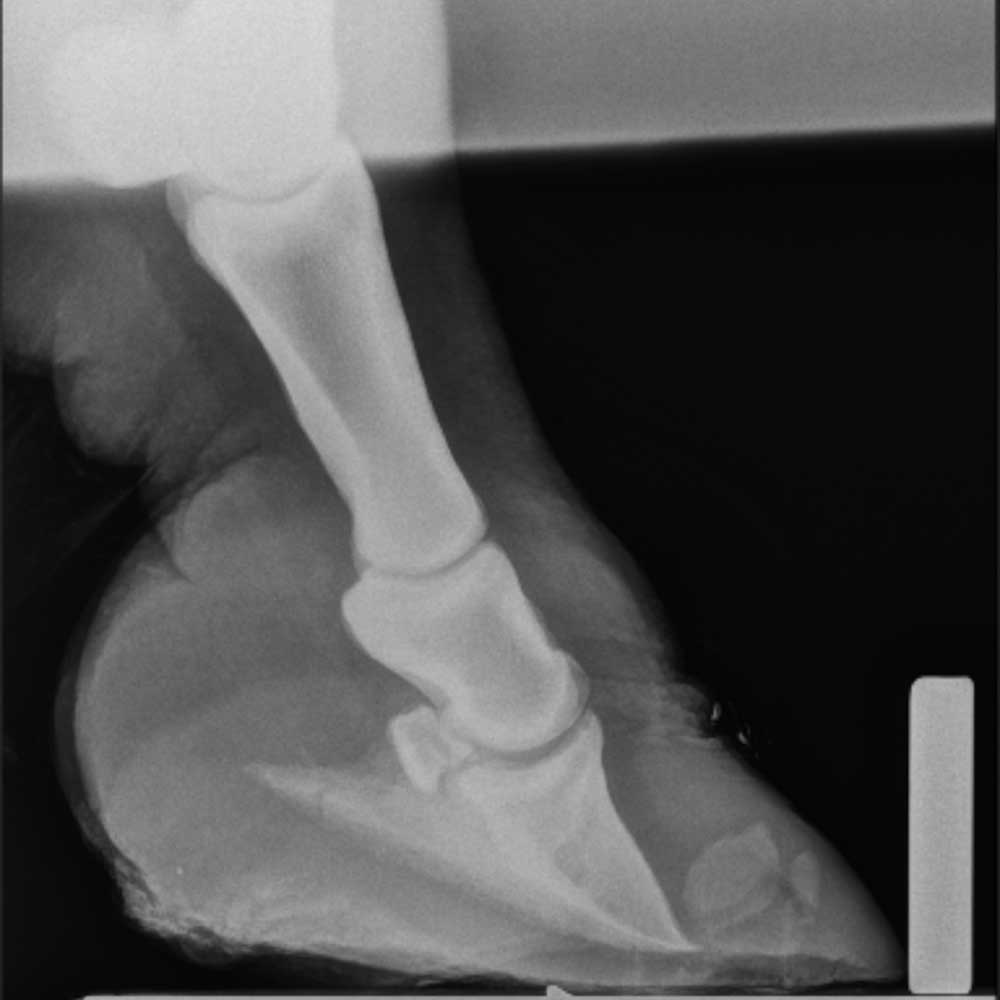
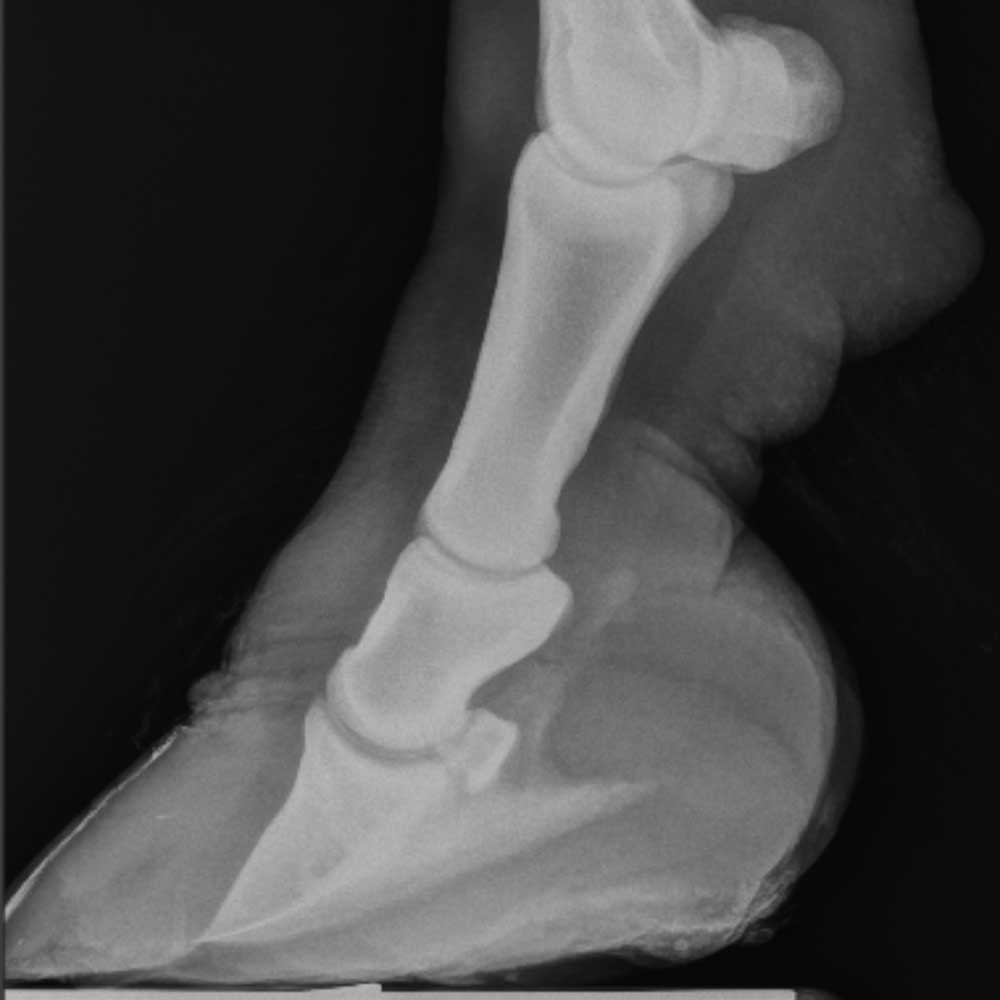
Yet, hope was not lost. The clinic was familiar with the transformative potential of FormaHoof. Rooster’s owner, albeit apprehensively, greenlighted its application on the stallion’s front feet.
The results were nothing short of miraculous. Merely a day post the FormaHoof application, Rooster was an altered horse. Gone were the grimaces of pain, replaced by a sprightly energy. Not only did he walk, but he strutted confidently to the collection phantom. More impressively, his semen collections post the treatment saw a twofold increase in output.
Elated with the success at the clinic and Rooster’s newfound vitality, he was transported back home, a journey spanning 350 miles. The care baton was passed on to another veterinarian well-versed with FormaHoof to ensure continuity in Rooster’s recovery.
Today, Rooster continues to thrive, and the ripple effects of his recovery reverberate, particularly with his grateful owner. From staring at a future devoid of Rooster to witnessing his dramatic turnaround, the owner’s heartfelt gratitude was simply encapsulated in the words, “Thank you for giving my horse back.”
The journey of Rooster isn’t merely a testament to the therapeutic prowess of FormaHoof but a beacon of hope for countless other horses grappling with laminitis. It’s a clarion call, urging timely interventions and showcasing that even in the face of adversity, recovery is always on the horizon.
Take the First Step Towards Recovery!
If your stallion, like Rooster, is grappling with the challenges of laminitis, know that a solution is within reach. Don’t let your majestic companion suffer in silence. Reach out to us to explore how FormaHoof can pave the path to recovery. Together, we can write a success story for your horse, just as we did for Rooster.

